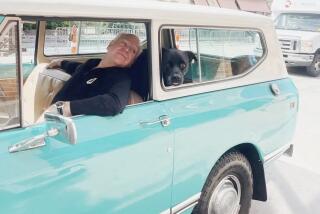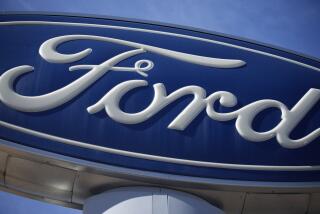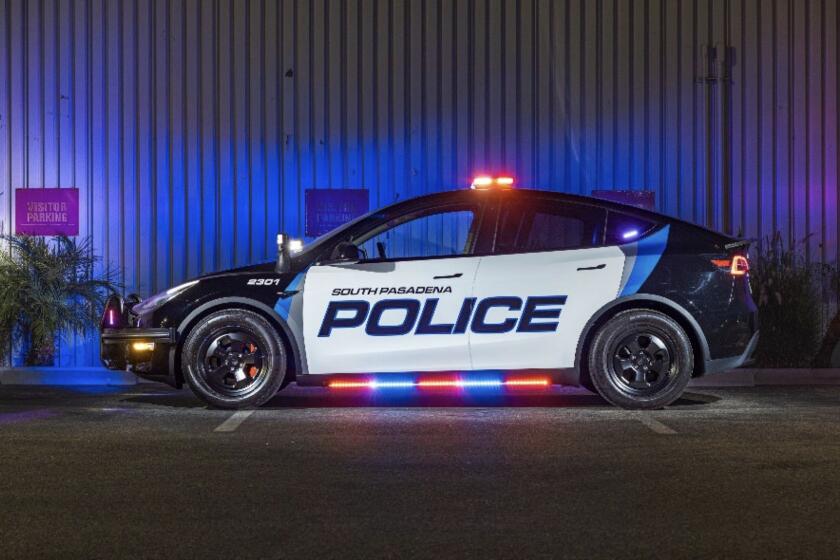Range Rover gets a makeover for 2013
It’s the Bel-Air buggy, the minivan of Malibu, the lorry of Laguna Beach.
For years, the Range Rover has existed in a rarefied space where high-end luxury and off-road performance converge, to the delight of a moneyed class that rarely gets it dirty.
Land Rover has long boasted that its full-size Range Rover sport utility vehicle has few peers. This is true. But that’s less because of its strengths than a simple lack of competitors in the same size and price category.
Far from being complacent with this distinction, Land Rover released a completely redesigned Range Rover for 2013.
This fourth-generation model starts at $83,545 and puts an exclamation point on the vehicle’s 43-year-long evolution. Similar to some of its buyers, it’s been stretched, enhanced and put on a crash diet befitting a real housewife of anywhere.
Yet, despite continuing the Range Rover’s evolution toward higher echelons of refinement and luxury, this new model still maintains the off-road chops on which Land Rover built its reputation.
The ethos of capability is more than marketing hooey. Range Rover’s success — and identity — depends on what it can do when the pavement ends.
Don’t expect this to change.
Addressing whether the company would ever scale back its vehicles’ off-road capabilities, Simon Turner, the Range Rover’s product manager, was unequivocal: “It’s absolutely a non-starter,” he said. “It’s just a fundamental attribute of who we will always be.”
This, despite the fact that even Turner acknowledged that only a tiny minority of buyers will tackle anything rougher than a pothole.
Experts outside the company agree. But such a position is not without its downsides.
“What they’re doing is playing very strongly in a narrow niche,” said Tom Libby, a senior forecasting analyst at auto research firm R.L. Polk & Co. “They’re doing a great job of marketing to that group, but the niche they’re in is pretty small.”
Range Rover’s sales figures back this up. The previous generation, from 2002 to 2012, averaged just 12,000 vehicles sold each year in the U.S., according to Edmunds.com.
What’s more, interest in the full-size Range Rover dropped noticeably when Land Rover introduced the slightly smaller Range Rover Sport in 2005. With similar cache on and off the road — and for many thousands of dollars less — the Sport quickly became Land Rover’s best seller.
Still, Land Rover, and Indian parent company Tata Motors Ltd., took seriously the task of revamping the crown jewel in its lineup.
It started by shedding an eye-popping 754 pounds from the previous Range Rover. This was done by building the entire unibody structure, as well as the chassis, out of aluminum.
By using essentially the same 510-horsepower supercharged V-8 as its heavier predecessor, acceleration on the new 5,137-pound Range Rover Supercharged we tested gets an appreciable boost. Land Rover says the 2013 model will do zero to 60 mph in 5.1 seconds, 0.8 seconds quicker than before.
This means this particular Range Rover — which cost $114,930 as tested — is an absolute sleeper at stoplights and onramps, pushing you into the back of your seat with a silent, refined strength.
The addictive acceleration comes at a cost: The fuel economy on this new lighter generation is only marginally better than its piggish predecessor.
The model we tested was rated at 13 miles per gallon in the city and 19 mpg on the highway. That’s only a 1 mpg gain for each over the previous generation, which used essentially the same engine.
That’s despite the installation of an eight-speed gearbox that theoretically should provide a meaningful efficiency boost. Yet it didn’t. During 350 miles of testing, we averaged 14.5 mpg.
Knowing that future and current fuel economy regulations in the U.S. and abroad make averages like this untenable, Land Rover made a change to the base engine for 2014. Gone is the Range Rover’s naturally aspirated V-8. In its place is a 340-horsepower supercharged V-6, pulled from the stable of corporate cousin Jaguar.
This move gives this base V-6 Range Rover a 5 mpg boost for both city and highway mileage, which is rated at 17 and 23, respectively. Numbers like that certainly won’t save any polar ice caps, but it’s a necessary step in the right direction.
It’s likely that bigger steps are looming. Rumors — which Land Rover would neither confirm nor deny — suggest the company will introduce a diesel hybrid variant of the Range Rover in the next year or two. Such a move would align the brand with numerous German luxury automakers that are in the midst of expanding their diesel lineups, especially in their SUVs.
Regardless of what’s under the hood, all Range Rovers lavish on their occupants a quiet, comfortable cabin with a design ripped straight out of a plush modernist home. The vehicle holds a regal view high above the road, with an open, airy cabin that’s enhanced by a massive panoramic sunroof.
Passenger space and comfort were a source of attention for Land Rover on this model. While the wheelbase of the 2013 Range Rover is up about 1.6 inches from its predecessor, the rear legroom jumps almost 5 inches. This comes at the slight expense of cargo room behind the rear passengers, though the seats do fold flat for extra space.
A $4,150 seating package on our tester made the leather-covered reclining rear seats power-operated, then threw in heating and cooling for all four seats, and a massage feature for the folks up front. Headrests don’t normally warrant a mention, but these were so soft they seemed stuffed with chinchilla fur.
Unfortunately, the mechanics of the Range Rover’s interior left something to be desired. The touch screen for the navigation and infotainment system was slow and onerous, with counterintuitive menus and commands. This is the same system that plagues other Land Rovers, and it will be a fine day for buyers when the company gives it the boot.
Clearly the automaker was more concerned with throwing R&D dollars at this Range Rover’s off-road prowess. This is a vehicle that can drive through water nearly 3 feet high, should you get unexpectedly caught in a biblical flood on the way to Barney’s. It can crawl up or down grades steep enough to need a chairlift.
There are five predetermined settings that tailor the vehicle’s engine, transmission, the permanent all-wheel-drive system and differential to the type of terrain you’re on.
Wrapping all this up is a sleeker body that gives the Range Rover a substantive presence on the road. The boxy profile of the previous generation has been rounded on the corners. No element of the new design is particularly arresting, but it’s a handsome package with the panache its audience seeks.
There’s no reason that audience shouldn’t grow. This 2013 Range Rover continues to use its off-street cred to burnish its appeal to buyers, regardless of their intentions. With few peers, muscle-car acceleration and members-only comfort and luxury, this is an SUV that can get you out of all the sticky situations you’ll probably never get into.
david.undercoffler@latimes.com







